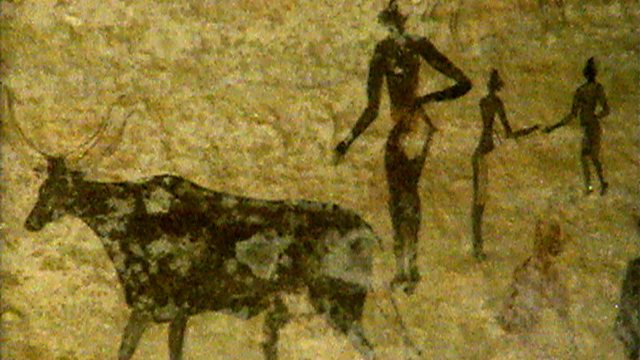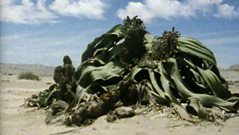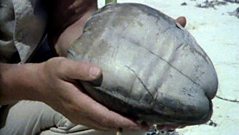
Deserted desert
Ancient art shows a Sahara fertile enough to support grazing animals.
At three and a half million square miles, the Sahara is the biggest desert on Earth. It can freeze at night but in the day it gets so hot that the highest land temperature ever recorded - 58 degrees centigrade - was recorded here. But it was not always this way. Prehistoric rock paintings found in the Sahara reveal pictures of antelope, giraffe, wild goat and cattle, animals that can not live here today because of the lack of vegetation. This means that once upon a time there was sufficient vegetation to sustain not only wild animals but whole herds of cattle. The pictures also show people who left here about 5,000 years ago when the rains began to fail. But there are some survivors from that time. David Attenborough visits a cypress that is probably about 2,000 to 3,000 years old and still produces fertile seeds, though the land is far too dry for the seeds to germinate. In fact, the tree itself only survives because it can send its roots deep into the ground to tap into underground water reserves. The drying out of the Sahara probably took place at the end of the Ice Age. As the glaciers retreated northwards across Europe, the delta rains that fell along their southern range left Africa and moved up into Europe. Most, if not all of the deserts of the world, seem to have formed about that time.
Duration:
This clip is from
Featured in...
![]()
成人快手 Nature
Be captivated, informed and inspired by the world's wildlife.
More clips from The Baking Deserts
-
![]()
Snare of silk
Duration: 01:48
-
![]()
Furnace flora
Duration: 03:46
-
![]()
Ships of the desert
Duration: 03:17
-
![]()
Desert survivor
Duration: 02:25
More clips from The Living Planet
-
![]()
Ocean Drifters—Worlds Apart
Duration: 01:20
-
![]()
Snare of silk—The Baking Deserts
Duration: 01:48
-
![]()
Furnace flora—The Baking Deserts
Duration: 03:46
-
![]()
Ships of the desert—The Baking Deserts
Duration: 03:17







